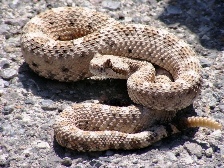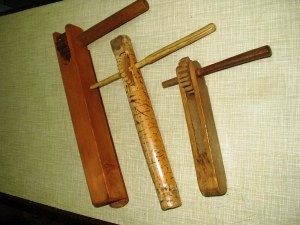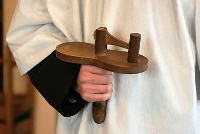TRIDUUM NOTE: Do you have a crotalus? How about two crotali?

In some places a wooden gizmo with little hammers or clappers are used. In Italian they are called a “tric troc”. Other versions are handles with ratchets that you twirl around. Italians call those “raganella”.
Check with your parish priest to find out if they have a clacker or whizze r or other gizmo.
r or other gizmo.
You should probably order them in pairs, since during the Eucharistic procession to repose the Blessed Sacrament after Mass of Holy Thursday, the altar boys could alternate as they went.
They will be delighted.
To purchase…

US HERE – UK HERE Or use the Amazon search box for a “Toca T-WR Ratchet”. It is not at all expensive.
For Holy Week, the last time bells, or organ, can be rung in the Roman Rite is for the first few words of the Glo
That said, it is a strong and venerable custom that noise-makers such as the crotulus or the “tric troc”, clappers, should be used.
I cannot imagine not using some noise-maker if one is available. The association of the sounds with the Triduum are deeply part of the way we Catholics do things. They set a wholly different tone during the Triduum.
By the way, at least one church – this one in poor, poor unfortunate Malta – replaces their church bells with a really big crotalus.
